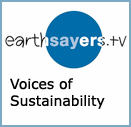 The ongoing story of the Coalition for Immokalee Workers is a model of place-based community action (grassroots) working through coalition, collaboration, and agreement rather than separation, disagreement and opposition. It’s about CSR, business human rights, and leadership.
The ongoing story of the Coalition for Immokalee Workers is a model of place-based community action (grassroots) working through coalition, collaboration, and agreement rather than separation, disagreement and opposition. It’s about CSR, business human rights, and leadership.
It’s how Mary Robinson, the first woman President of Ireland and former UN High  Commissioner of Human Rights, moved beyond “declarations” and used her leadership position and power to bring support to the co-founders Lucas Benitez and Gerardo Reyes-Chavez of the Coalition of Immokalee Workers.
Commissioner of Human Rights, moved beyond “declarations” and used her leadership position and power to bring support to the co-founders Lucas Benitez and Gerardo Reyes-Chavez of the Coalition of Immokalee Workers.
We have added three videos today to EarthSayers.tv, Farming and Food Production special collection, to share our respect for and advance the work of Lucas Benitez, Co-Director,  Coalition of Immokalee Workers (CIW) and that of the workers, friends, members, and colleagues of the Coalition.
Coalition of Immokalee Workers (CIW) and that of the workers, friends, members, and colleagues of the Coalition.
The first video is a speech by Mr. Benitez back in 2002 at the Mary Robinson Speaker Series in which he honors Mary Robinson for joining their cause and talks about the Coalition and the Code of Conduct they are successfully enlisting Corporations and growers to sign and adopt.
The second video is a news report from Democracy Now for today, May 20th on the hundreds of farm workers and their supporters who are in New York City ahead of Wendy’s shareholder meeting to ask for improved working conditions for those who pick its tomatoes in the Fair  Food campaign organized by the Coalition of Immokalee Workers. CIW farmworker and a co-founder with Lucas of the CIW, Gerardo Reyes-Chavez talks about this social responsibility campaign. So far McDonald’s, Subway, Burger King and Taco Bell have all joined the White House-recognized Social Responsibility Program, agreeing to pay an extra penny per pound of tomatoes to raise wages and only buy from fields where workers’ rights are respected.
Food campaign organized by the Coalition of Immokalee Workers. CIW farmworker and a co-founder with Lucas of the CIW, Gerardo Reyes-Chavez talks about this social responsibility campaign. So far McDonald’s, Subway, Burger King and Taco Bell have all joined the White House-recognized Social Responsibility Program, agreeing to pay an extra penny per pound of tomatoes to raise wages and only buy from fields where workers’ rights are respected.
The third is a video record of the fifteen-day, 200-mile March for Rights, Respect, and Fair Food which came to a “loud, colorful, and jubilant end” on Sunday, March 17th outside Publix corporate headquarters in Lakeland, Florida.
Ruth Ann Barrett, Sustainability Advocate, Earthsayers.tv, May 20, 2013, Cleveland, Ohio.




